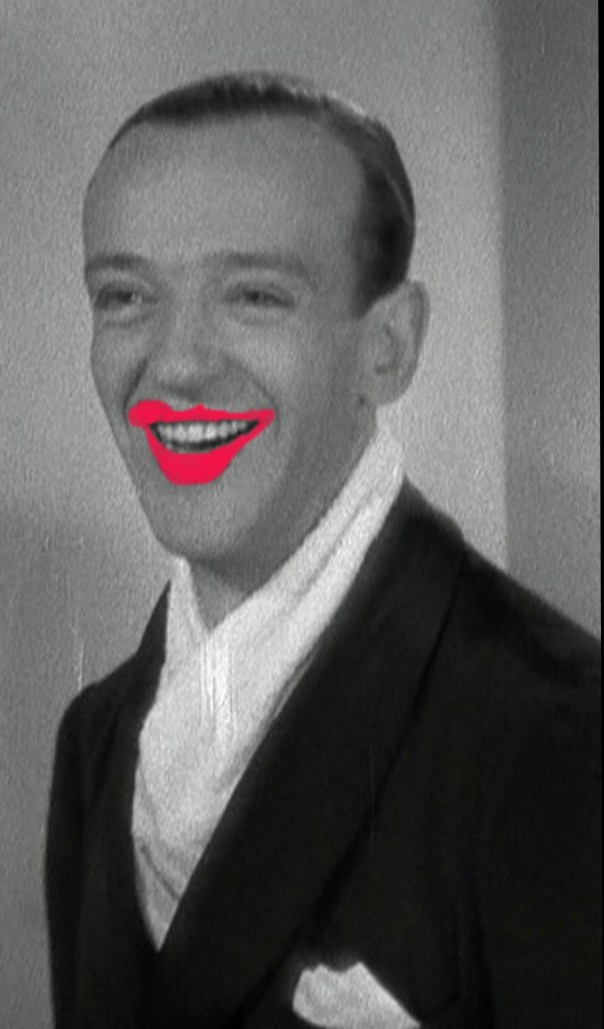A light-hearted, slightly spoofy, detective story. The tone is somewhat in the vein of Simon Templar – sophisticated, elegant, tongue-in-cheek — hardly a surprise as the film is written by Lesley Charteris, who also wrote The Saint. The film begins with Deanna Durbin, playing a San Francisco heiress on her way to New York by train, who looks up from her detective novel and her box of chocolate, and witnesses a murder being committed as the train speeds by, a detail Agatha Christie must have taken note of, as that’s how her 4.50 FROM PADDINGTON begins.
As with CHRISTMAS HOLIDAY (Robert Siodmak, 1944) this is a concerted effort to expand Deanna’s persona and her audience, also set at Christmas. She’s surround by a great cast (Ralph Bellamy, Dan Duryea, Allan Jenkins, Edward Everett Horton), beautifully lit by Woody Bredell, and gets to sing three very famous songs songs in a low slow style that sounds lovely (‘Silent Night’, ‘Give Me A Little Kiss’, ‘Day and Night’). She doesn’t quite swing but she’s no longer singing opera either. She wears a striking array of hats, dresses (by Howard Greer), hairdos and jewels ( and I see there are still entire Pinterest pages devoted to these).
The question is ‘what is this film doing in a noir box set’? The answer, I suppose, is that it’s instructive in that so many of the situations and the lighting are those one expects from noir, but the tone and moral world are so different as to turn the film into something else.
Deanna Durbin is very charismatic; she looks smashing, and sings great. But the character as written is very thoughtless of others and her charm has a bullying quality that slightly brings to mind Shirley Temple. The screen brags at the very top are a selection of her outfits and hairdos but also , immediately above, some archetypally noir imagery from the film. Lastly, it sometimes seems all a man needs to be imaged a villain is to carry a cat.
José Arroyo
















































 Franklin Pangborn’s been called an aesthete, prissy, flighty, a nance, a pansy, an effeminate fussbudget. Along with Edward Everett Horton, Eric Blore, and other beloved character actors of the classic era, he made queerness affectionately visible at a time when it couldn’t even be mentioned. This bit part in A Star is Born illustrates why: listen to the intonation on the first line ‘Flash!’, the stress he puts on the word ‘peak’, the phrasing – does he change divine to devone? — the way he holds his hands, the passion for the inconsequential, the evocation of a slight superiority to what he’s doing, the uppity accent and the careful phrasing; the kind of guy who’d visit your home only to offer proof that your antiques are really repros: watching him speak, a whole other way of being, one then unmentionable, materialises and edges its way into representation.
Franklin Pangborn’s been called an aesthete, prissy, flighty, a nance, a pansy, an effeminate fussbudget. Along with Edward Everett Horton, Eric Blore, and other beloved character actors of the classic era, he made queerness affectionately visible at a time when it couldn’t even be mentioned. This bit part in A Star is Born illustrates why: listen to the intonation on the first line ‘Flash!’, the stress he puts on the word ‘peak’, the phrasing – does he change divine to devone? — the way he holds his hands, the passion for the inconsequential, the evocation of a slight superiority to what he’s doing, the uppity accent and the careful phrasing; the kind of guy who’d visit your home only to offer proof that your antiques are really repros: watching him speak, a whole other way of being, one then unmentionable, materialises and edges its way into representation.

